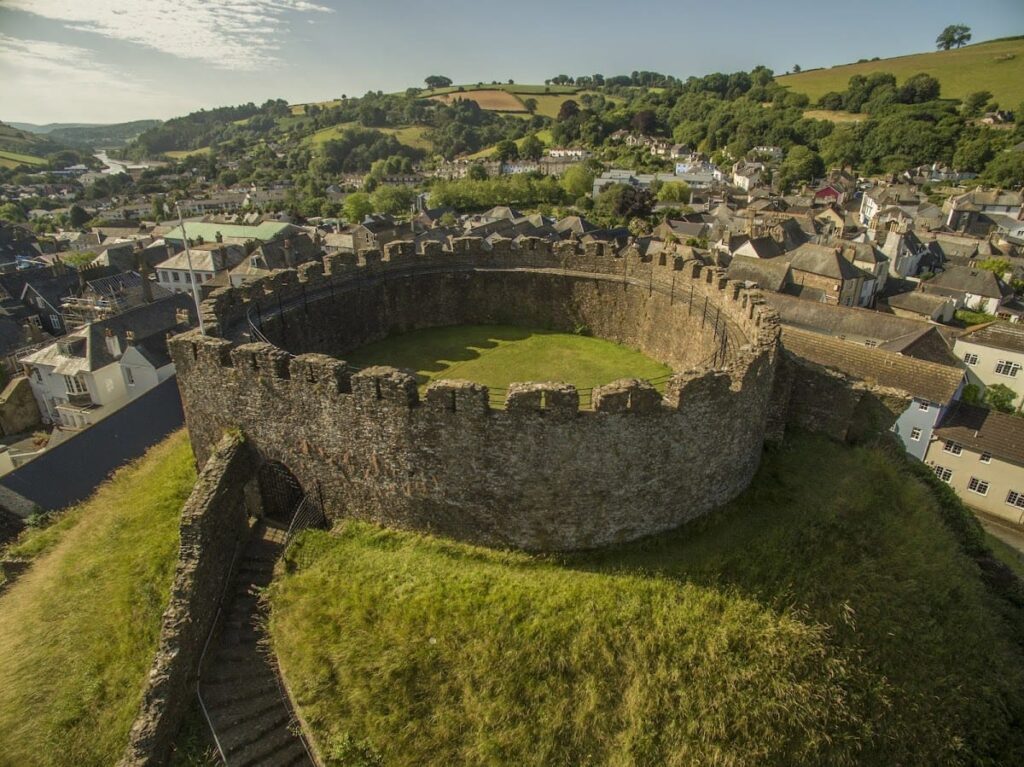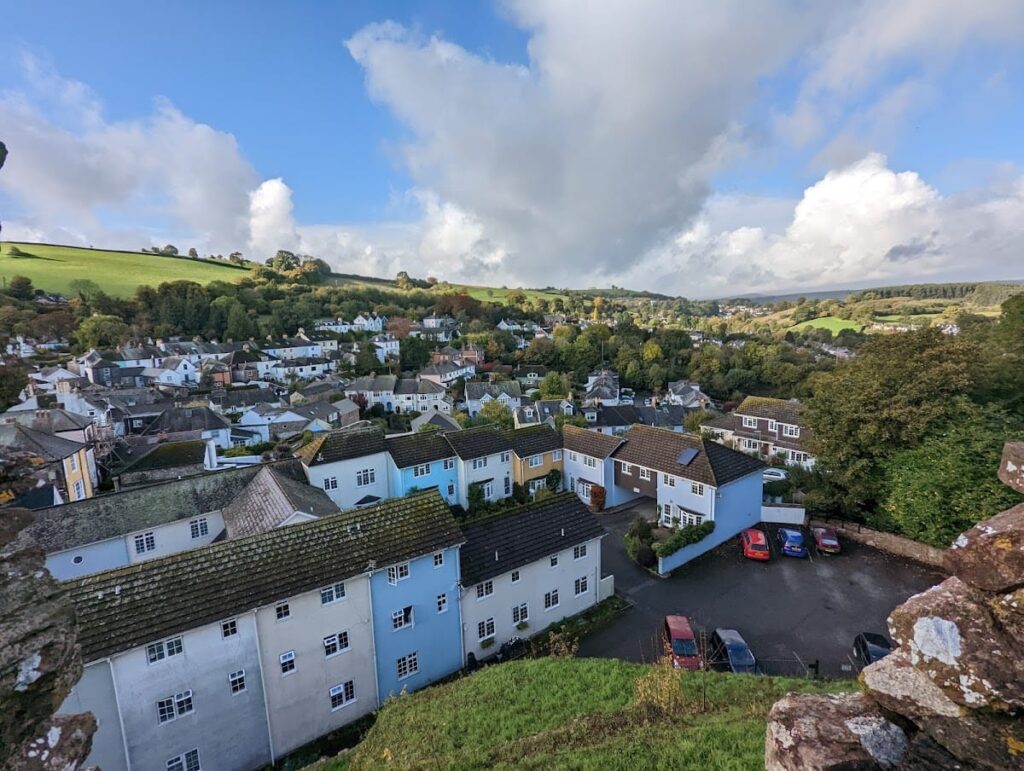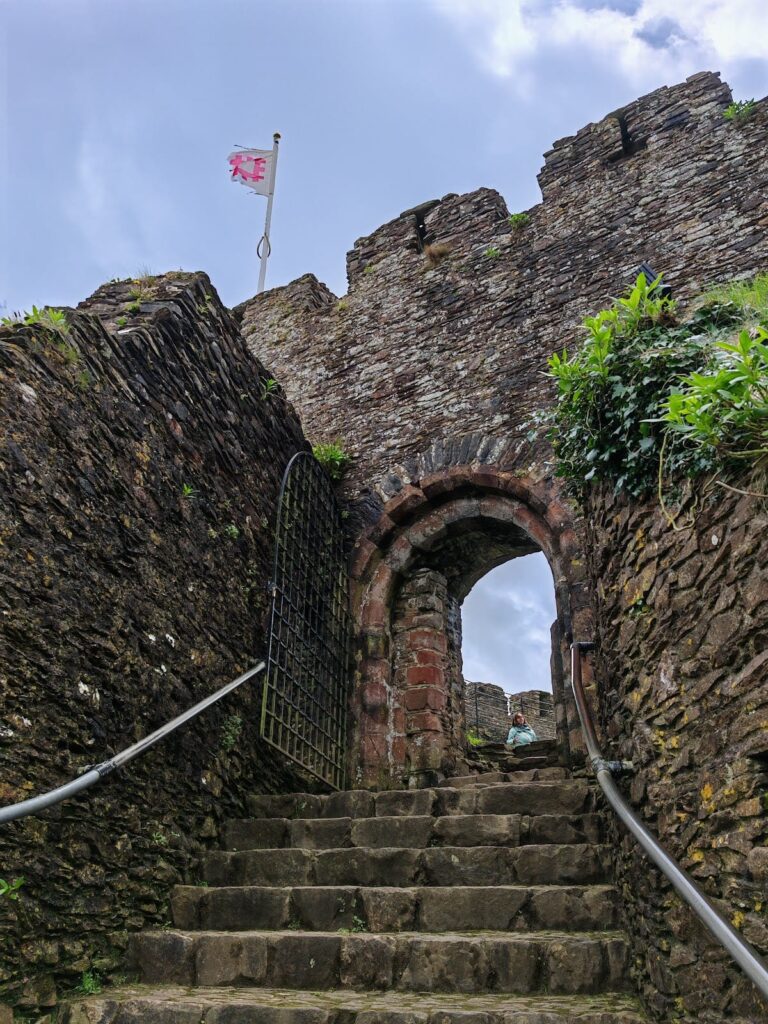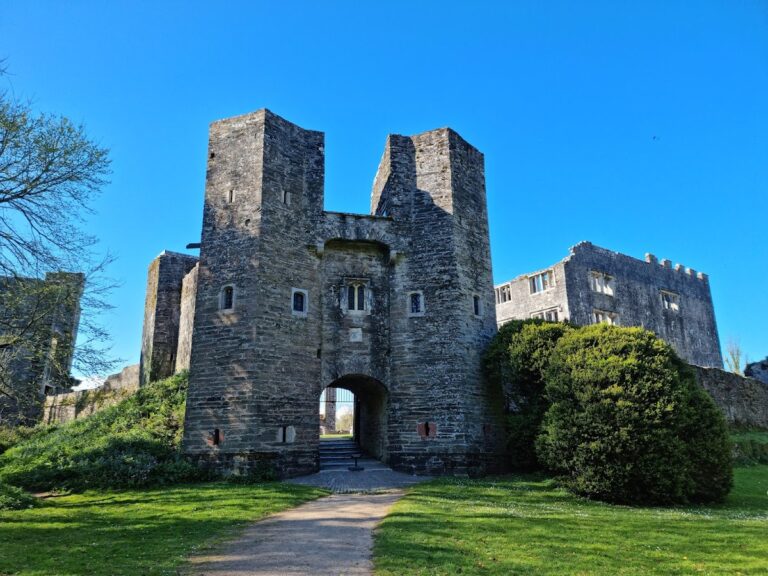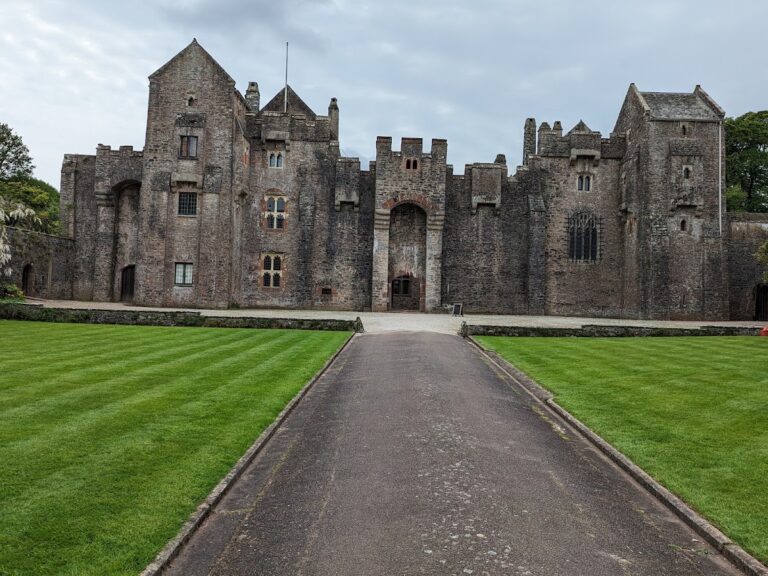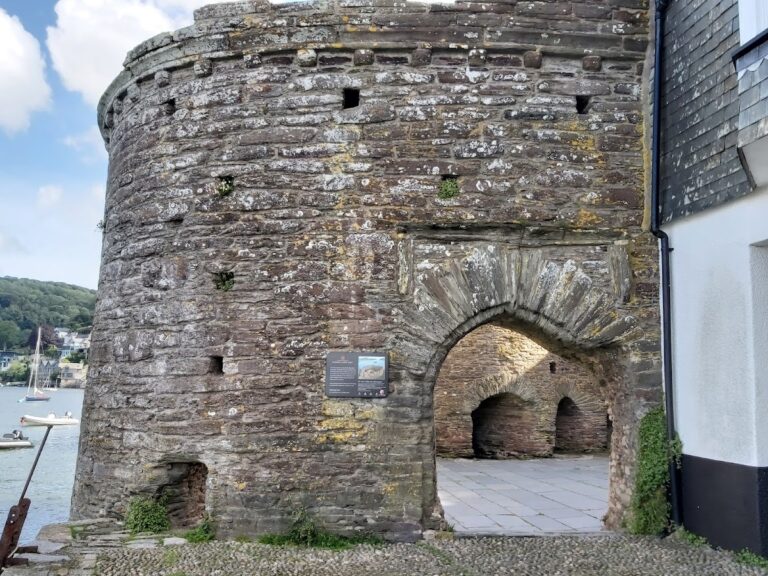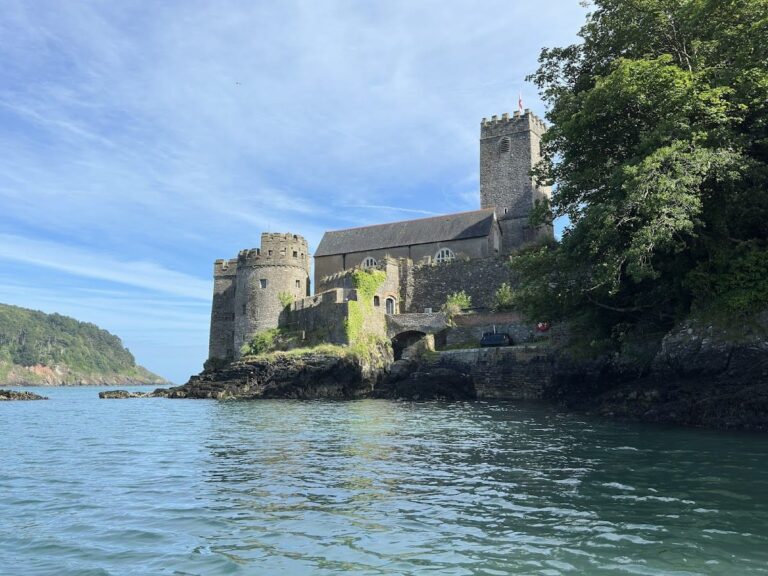Totnes Castle: A Norman Motte and Bailey Castle in England
Visitor Information
Google Rating: 4.2
Popularity: Medium
Google Maps: View on Google Maps
Official Website: www.english-heritage.org.uk
Country: United Kingdom
Civilization: Medieval European
Remains: Military
History
Totnes Castle is located in Castle Street, Totnes, in the United Kingdom. It was established shortly after the Norman Conquest of 1066 by Juhel of Totnes, a Breton follower of William the Conqueror. Juhel was granted the feudal barony of Totnes in 1068 and likely built the first fortification as a wooden structure to secure his new lands.
After King William I died, Juhel lost control of the barony, possibly due to his role in the Rebellion of 1088. The castle then passed to Roger de Nonant and his family, who held it for three generations. During this time, the castle remained an important defensive site in the region.
Later, William de Braose, the 3rd Lord of Bramber, acquired Totnes Castle. He is credited with replacing the original wooden defenses with stone, constructing the first stone shell keep and curtain walls. This marked a significant upgrade in the castle’s fortifications, reflecting the need for stronger defenses in the 12th and 13th centuries.
By 1326, the castle had fallen into ruin under the ownership of the de la Zouch family. The crown ordered repairs, leading to the rebuilding of the shell keep using local Devonian limestone and red sandstone. The de la Zouch family also added a stable and appointed a constable to oversee the castle’s maintenance and security.
Following the Wars of the Roses in the 15th century, Totnes Castle again declined in condition. Despite this, it was occupied during the English Civil War in the 17th century, although no significant military engagements took place there. The castle’s role during this period was more administrative than martial.
Ownership changed hands several times after the Civil War. In 1485, Sir Richard Edgecomb took possession, and in 1764, Edward Seymour, the 9th Duke of Somerset, acquired the castle. Seymour introduced leisure features such as a tennis court and a tea room, reflecting a shift from military use to recreational purposes.
Since 1984, Totnes Castle has been managed by English Heritage. It is recognized as a scheduled monument and a Grade I listed building, ensuring its protection and preservation as an important historical site.
Remains
Totnes Castle is a Norman motte and bailey design, situated on a large hill about 35 meters above sea level. The site overlooks the town and controls access to three nearby valleys. The castle’s layout includes a raised earthwork (the motte) topped by a circular stone defensive wall known as a shell keep.
The surviving stone structures date mainly from the 14th-century reconstruction by the de la Zouch family. These include the shell keep and the curtain wall surrounding the motte. Both were built using locally sourced Devonian limestone and red sandstone, materials chosen for their durability and availability.
Originally, the castle featured wooden defenses such as a palisade and tower, which were replaced by stone under William de Braose. The stone shell keep provided a strong defensive position atop the motte. The castle complex also included a stable, added during the 14th-century repairs.
Today, Totnes Castle is one of the best-preserved Norman motte and bailey castles in England. The stone keep and curtain walls remain largely intact, offering a clear view of medieval military architecture. The site sits in a valley with mostly flat terrain nearby, with hills rising to 136 meters about one kilometer to the southwest.
The surrounding landscape features grasslands and occasional rocky outcrops, influenced by a coastal climate. The area has a moderate population density of around 93 people per square kilometer. No inscriptions or decorative elements have been documented on the castle’s stonework.

